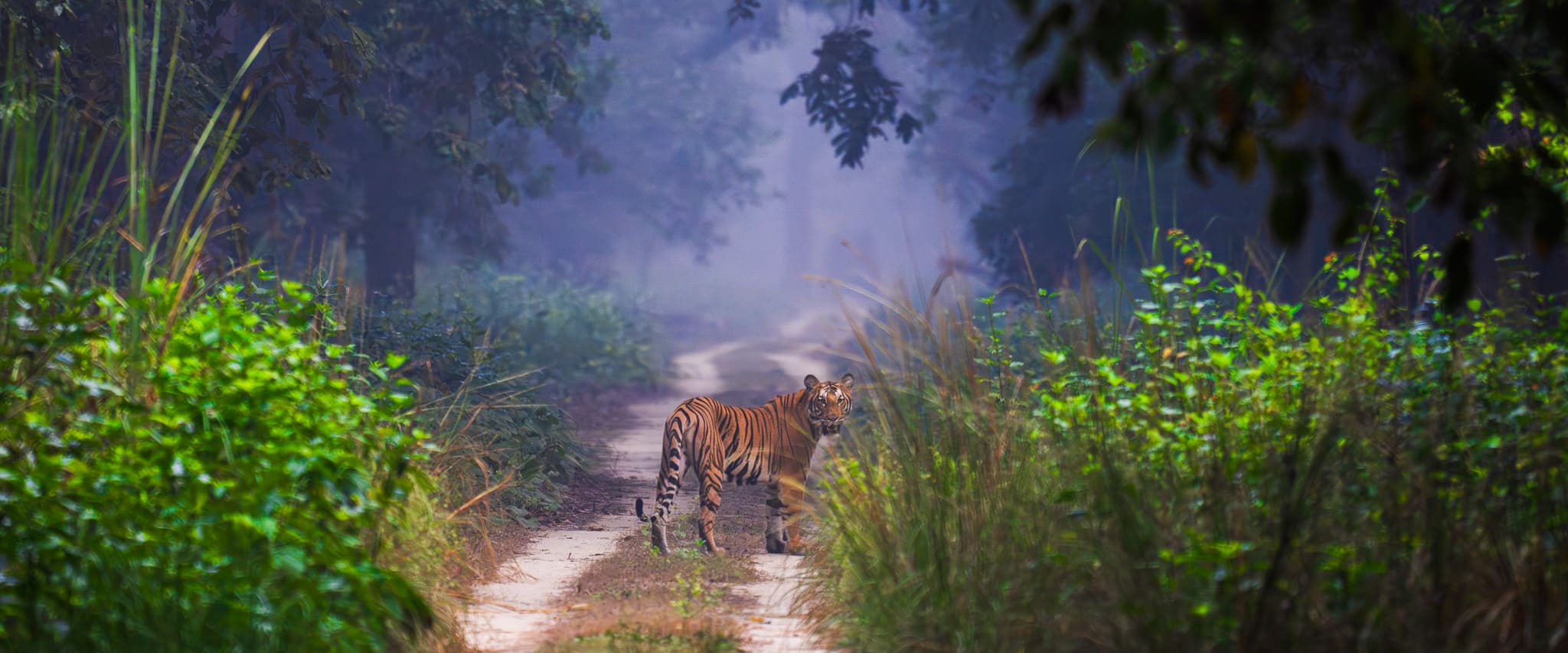The Royal Bengal Tiger of India (Panthera tigris tigris) is the most iconic big cat of India, embodying strength, agility, and unmatched grandeur. As the apex predator of its ecosystem, it plays a crucial role in maintaining the balance of nature. Found across dense forests, grasslands, and mangroves, this subspecies of tiger is the most populous and well-known among all tiger species worldwide.
Despite its power and adaptability, the Royal Bengal Tiger faces increasing threats from habitat destruction, poaching, and human-wildlife conflict. Through this article, we explore the evolution, adaptations, hunting behavior, communication, reproduction, conservation efforts, and significance of this majestic species.

Why is it Called the ‘Royal’ Bengal Tiger?
The Royal Bengal Tiger of India is often referred to as the ‘Royal Bengal Tiger’, a title that reflects both its majestic presence and historical significance.
-
- Historical Recognition of Royal Bengal Tiger – During British colonial rule in India, the Bengal Tiger was associated with royalty, power, and dominance. It was often the preferred hunt of kings and British officers, symbolizing bravery and strength.
- Cultural and Mythological Importance – In Indian mythology and folklore, tigers have been regarded as divine beings and symbols of protection and valor. The tiger is also associated with Goddess Durga, who is often depicted riding a tiger, reinforcing its regal stature.
- Physical Magnificence – With its striking orange coat, bold black stripes, and commanding presence, the Bengal Tiger has an unparalleled aura of royalty in the wild.
- Status as the National Animal of India – Its grandeur, power, and dominance earned it the title of India’s national animal, further reinforcing its royal status.
- Symbol of Conservation Success – The Bengal Tiger has become the face of India’s conservation efforts, with Project Tiger ensuring its protection. Its survival is symbolic of India’s commitment to wildlife conservation.
This regal title is not just a name—it represents the Royal Bengal Tiger’s supreme position in the animal kingdom and its deep connection with India’s natural and cultural heritage.
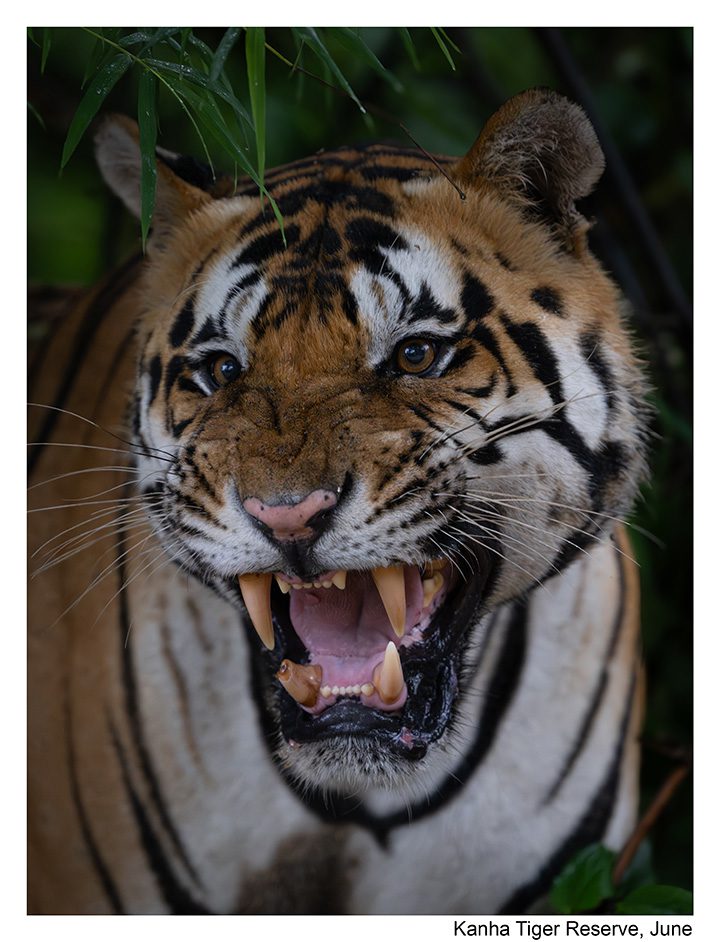
Global Tiger Subspecies & Their Populations
There are six living subspecies of tigers:
-
- Bengal Tiger (Panthera tigris tigris) – ~3,500 individuals (India, Bangladesh, Nepal, Bhutan)
- Siberian Tiger (Panthera tigris altaica) – ~450 individuals (Russia, China)
- Indochinese Tiger (Panthera tigris corbetti) – ~350 individuals (Myanmar, Thailand, Vietnam, Laos)
- Malayan Tiger (Panthera tigris jacksoni) – ~80-120 individuals (Malaysia)
- South China Tiger (Panthera tigris amoyensis) – Functionally extinct in the wild
- Sumatran Tiger (Panthera tigris sumatrae) – ~400-600 individuals (Sumatra, Indonesia)
Adaptations of the Royal Bengal Tiger: Nature’s Perfect Predator
The Royal Bengal Tiger has developed remarkable adaptations that allow it to thrive across diverse habitats in the Indian subcontinent:
-
- Camouflage: Its striped coat helps it blend seamlessly into tall grasses and dense forests.
- Powerful Limbs: Strong legs enable high-speed pursuits and the ability to tackle large prey.
- Keen Night Vision: Exceptional night vision helps them hunt in low-light conditions.
- Adaptability to Water: Unlike most cats, Bengal Tigers are excellent swimmers, often hunting in mangrove swamps like the Sundarbans.
- Sharp Canines & Retractable Claws: Their long canines help deliver a fatal bite, while retractable claws assist in grip and stealth.
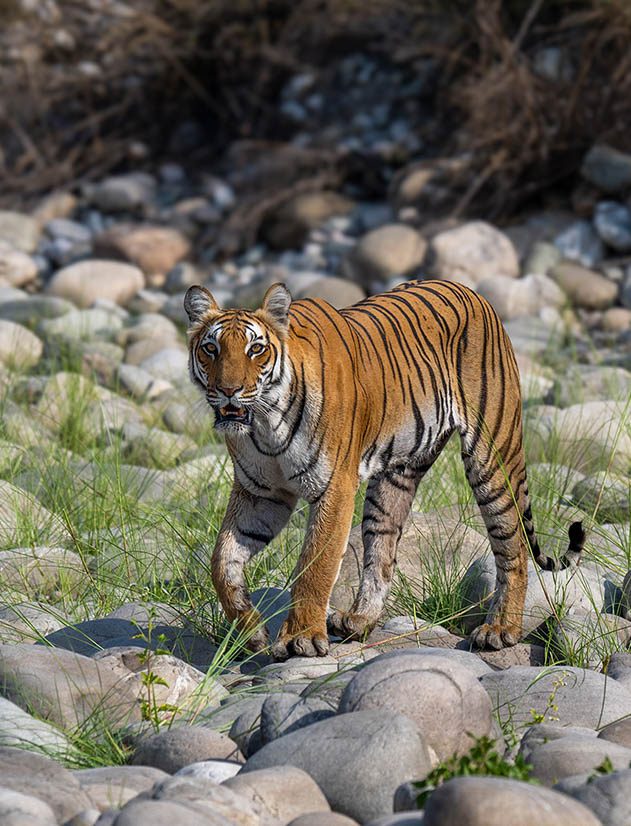
Behavior & Social Life of a Royal Bengal Tiger
Unlike lions, tigers are solitary creatures. A male tiger’s territory often overlaps with those of multiple females, but he does not stay with them permanently.
-
- Territorial Marking: Tigers use scent markings, scratch marks on trees, and roaring to establish and protect their domain.
- Hunting & Diet: They hunt alone, relying on stealth and ambush techniques.
- Nocturnal Lifestyle: Most hunting and territorial patrolling occur at night.
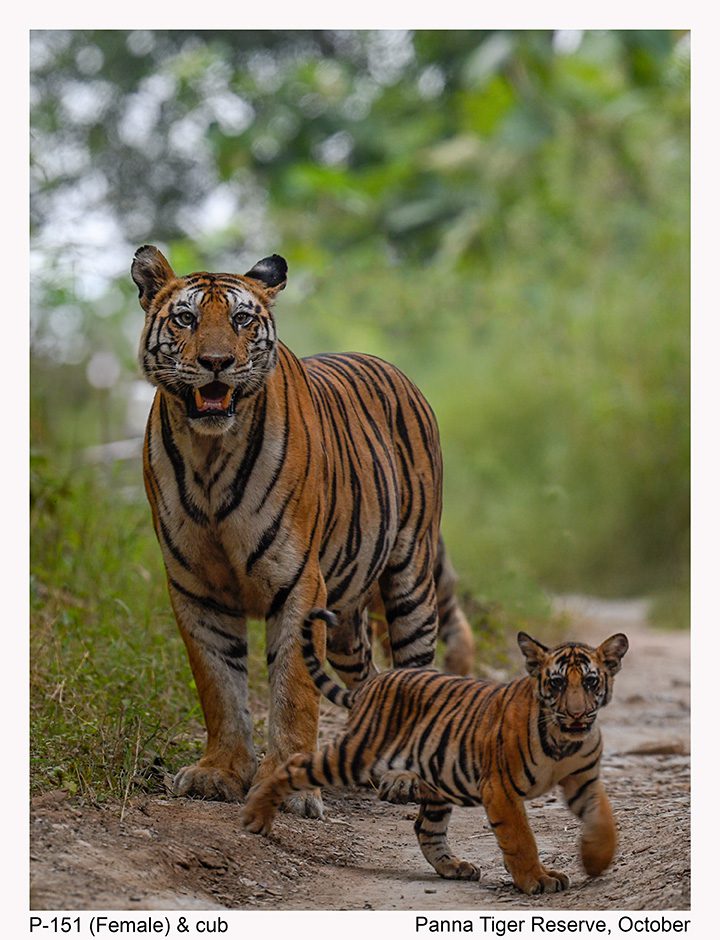
Reproduction & Raising the Next Generation
Courtship & Mating
-
- Courtship lasts 5 to 7 days, where the male follows the female, engaging in chuffing sounds and body rubbing.
- Mating occurs multiple times over a few days to ensure conception.
- After mating, the male leaves, and the female takes full responsibility for raising the cubs.
Motherhood & Cubs
-
- Gestation: 100-110 days
- Litter Size: 2 to 4 cubs, occasionally up to 6
- Early Life: Cubs are born blind and completely dependent on their mother.
- Learning to Hunt: By 6-8 months, cubs start accompanying their mother to learn hunting skills.
- Independence: Around 2-3 years, they leave the mother’s territory to establish their own home range.
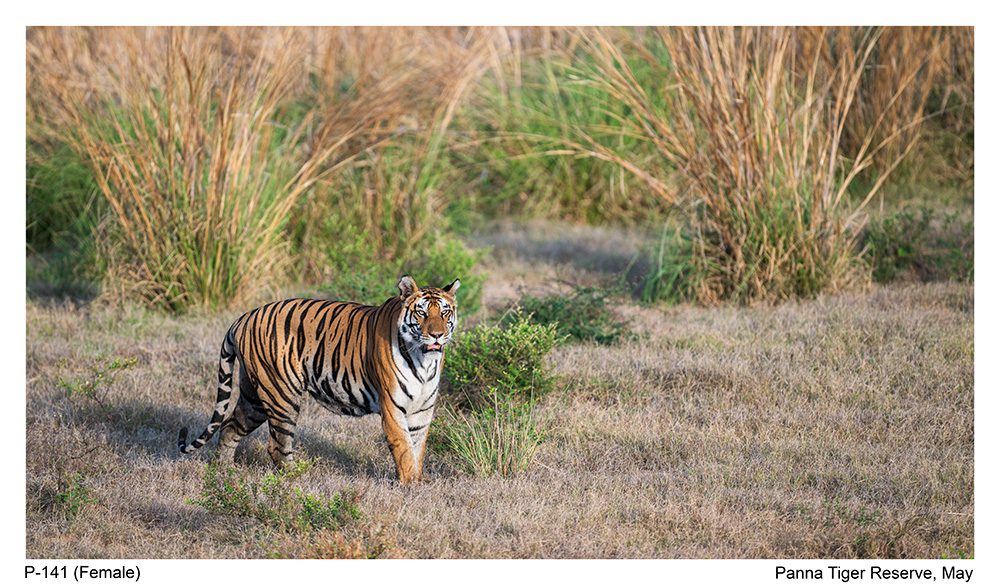
Hunting Techniques & Diet
Bengal Tigers are solitary ambush predators, relying on stealth and precision rather than long chases to capture prey.
Hunting Strategy:
-
- Silent Approach: Moves carefully, using dense foliage as cover.
- Ambush & Burst Speed: Attacks in a sudden burst, using powerful hind legs.
- Bite to Kill: A fatal bite to the neck or skull ensures a quick kill.
- Dragging the Prey: Often drags the carcass to a secluded area to avoid scavengers.
Primary Prey Species:
-
- Large Herbivores: Sambar deer, Chital, Barasingha, and Nilgai.
- Bovines: Wild Boar and Gaur (Indian Bison).
- Occasionally: Smaller mammals like monkeys, hares, and porcupines.
- Rarely: Sloth bears, leopards, and domestic livestock.
Tigers are highly efficient hunters, but only about 10% of their hunting attempts are successful, making every kill crucial for survival.

Project Tiger: A Conservation Milestone
India launched Project Tiger in 1973, recognizing the urgent need to protect the species from poaching and habitat loss. Since then, the initiative has helped increase tiger populations through habitat preservation and anti-poaching measures.
Conservation Challenges:
-
- Habitat Fragmentation: Human expansion reduces natural tiger corridors.
- Poaching & Illegal Trade: Tigers are still targeted for their skin and body parts.
- Human-Wildlife Conflict: Encroachment leads to tigers preying on livestock.
Success Stories:
-
- Ranthambore & Bandhavgarh: Significant tiger population recovery.
- Panna Tiger Reserve: Reintroduced tigers after local extinction.
- Sundarbans: Tigers thriving in a challenging mangrove ecosystem.
While conservation efforts are ongoing, continued awareness and responsible tourism play a key role in securing their future.
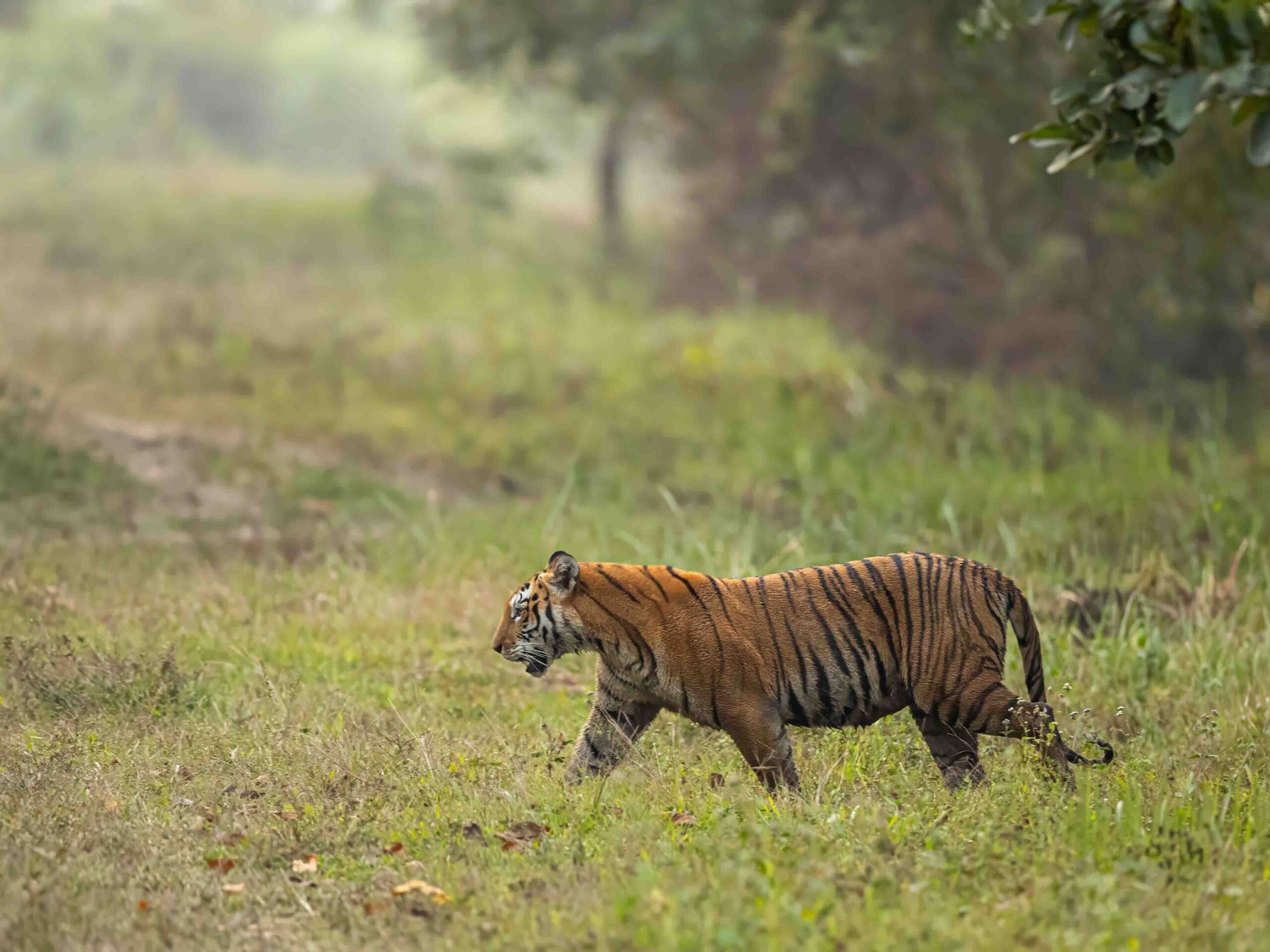
Conclusion: The Need to Protect an Icon
The Bengal Tiger is not just a predator; it is a symbol of India’s rich biodiversity. Its presence indicates the health of its ecosystem, and its survival is essential to maintaining ecological balance.
Conservation efforts, responsible tourism, and awareness campaigns continue to play a crucial role in ensuring the future of these majestic big cats. As we marvel at their beauty and power, we must also commit to protecting their habitat for generations to come.
Join WOW Safaris – Experience the Wild & Contribute to Conservation!
Sources also include

